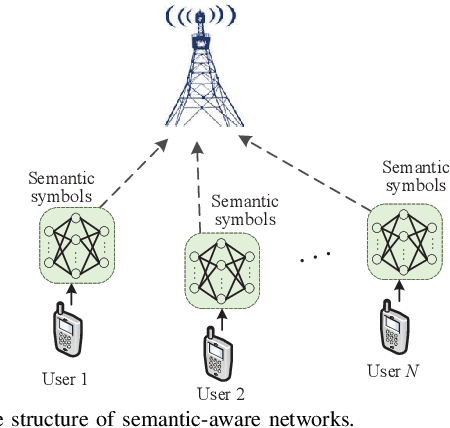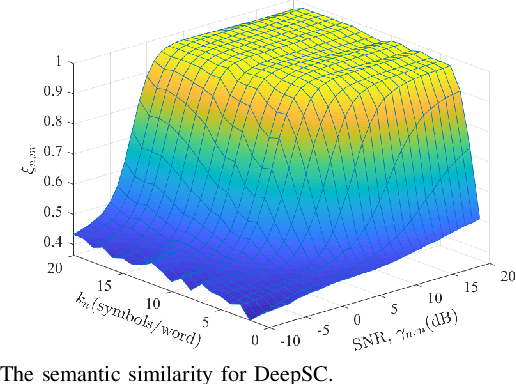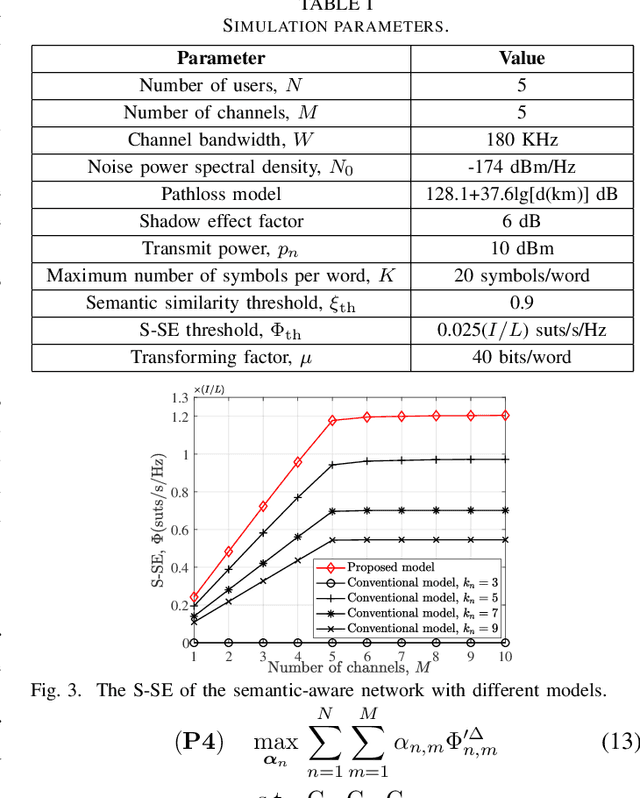Resource allocation for semantic-aware networks
Paper and Code
Jan 16, 2022



Semantic communications have shown its great potential to improve the transmission reliability, especially in low signal-to-noise regime. However, the resource allocation for semantic-aware networks still remains unexplored, which is a critical issue in guaranteeing the transmission reliability of semantic symbols and the communication efficiency of users. To fill this gap, we investigate the spectral efficiency in the semantic domain and rethink the semantic-aware resource allocation issue. Specifically, the semantic spectral efficiency (S-SE) is defined for the first time, and is used to optimize resource allocation in semantic-aware networks in terms of channel assignment and the number of transmitted semantic symbols. Additionally, for fair comparison of semantic and conventional communication systems, a transform method is developed to convert the conventional bit-based spectral efficiency to the S-SE. Simulation results demonstrate the validity and feasibility of the proposed semantic-aware resource allocation model, as well as the superiority of semantic communications in terms of the S-SE.
 Add to Chrome
Add to Chrome Add to Firefox
Add to Firefox Add to Edge
Add to Edge